K-Mobile Updates
Progress never stands still and neither does KOREC’s K-Mobile mapping/data capture software development team! Here’s a round-up of what they’ve been working on over the past few weeks:
Android Bluetooth link to laser rangefinders
It’s been available in the Windows version of K-Mobile for a while and now we’ve added this useful function to the Android version too. Suitable for any Bluetooth enabled laser, its perfect for ensuring your offset measurements (eg shooting to points in inaccessible areas or GPS blackspots) or height and width measurements (ideal for tree surveys) are recorded directly into your data entry form.

Live Portal Update
Imagine you are cleaning gullies or checking street furniture. Permitted office users can now log into the secure K-Mobile portal and track a service vehicle through a ‘bread crumb’ trail watching dots turn from red to blue as work is completed. Updates occur once a minute and this useful information can be used to illustrate all work done in a day or even show live dashboards, for example as an interactive pie chart. Simply click on a segment to view the location of recorded defects etc bringing live analysis to your data collection projects.
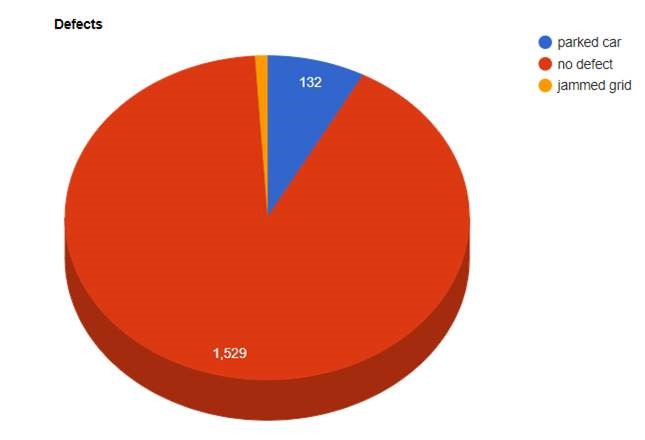
New product – K-Mobile Tree Edition
All the functionality of our fully featured K-Mobile data capture software with extra built-in tree functionality and visualisation tools. Perfect for undertaking British Standard tree surveys, key benefits include live graphic representation of tree canopy measured in four directions (N,S,E,W) and calculations and graphic representation of root radius. Also visible back in the office via the Live Portal. We have a new case study on exactly this application at http://bit.ly/2FRtMRb
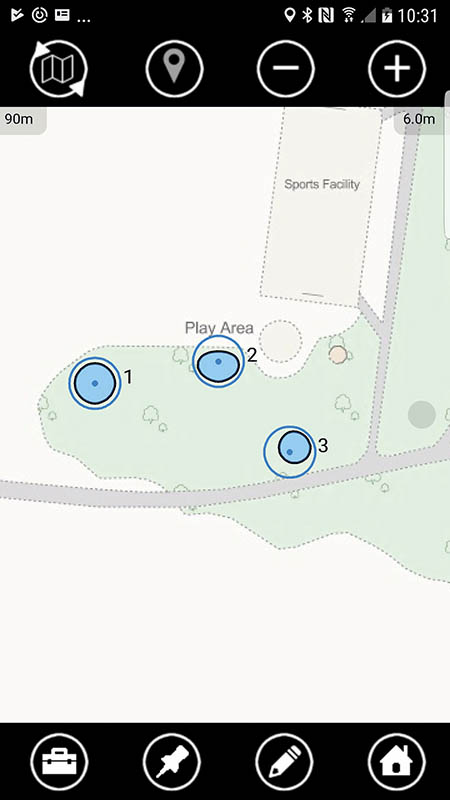
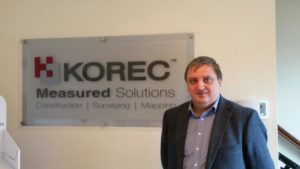
Combining a high level of technical nous with a user-friendly delivery (Eugen is a part time lecturer at the acclaimed Dublin Institute of Technology) our new KOREC Geospatial Sales Consultant also brings extensive practical experience to the team, having worked on site in a range of survey disciplines as well as at the sharp end of Murphy Surveys as a former Quality and Technical Manager specialising in site and office workflows.
A renowned Chartered Geomatics Surveyor, Eugen is a professional member of the Society of Chartered Surveyors Ireland (SCSI) and the Royal Institution of Chartered Surveyors (RICS). Elected member of the Geomatics Professional Group in SCSI from 2011 to 2013 and from 2015 to present, where he adapted the RICS’s “Scale” and “Map Projections and Scale Factors” client guides for SCSI and wrote “OSGM15 – Geoid Changes for Ireland” SCSI client guide.
Amongst all of this Eugen also volunteers his time with Coder Dojo, a global network of free computer programming clubs for young people. When he does get any spare time, he enjoys a spot of swimming.
We are excited and proud to have Eugen on board with us at KOREC as a Geospatial Solutions Consultant in Dublin, Ireland. We are sure that with all his knowledge and experience, he will be a great asset to KOREC and our customers.
Welcome to KOREC Group team, Eugen!
X Marks the Spot
As with all good adventure trails X usually marks the spot of hidden treasure. Well, we’re pleased to tell you that we’ve got a real spot of treasure in store.
KOREC are giving 7 lucky followers the chance to win an all expense paid trip to Stockholm for a Trimble SX10 Factory Tour in Danderyd, Sweden on the 12th and 13th June 2018.
How can you get your hand on a ticket we hear you ask? Well it’s very simple really. Send us a picture or short video of your Trimble equipment being used in a tough or unusual environment. The best image / video wins.
You have until April 26th to send us your entries. Just email us at marketing@korecgroup.com
We’ve also got lots of other ways you can win a ticket. Keep an eye on our socials for further details.
The February issue of CES magazine sees the publication of the full version of Alan Browne’s article on instrument theft and its consequences. This is a problem that is blighting our industry and its good to see it highlighted in CES.
Read Alan’s full article here

Since its launch in 2012 the R10 has proved to be one of KOREC’s best selling products. It’s generated more KOREC case studies than any other Trimble instrument and provided us with a CES magazine front cover photograph that became recognisable across the world.
But what do KOREC customers value most about their Trimble R10’s performance? Of course there are honourable mentions for all the R10’s patented technologies including:
• Trimble CenterPoint RTX delivering GNSS corrections via satellite or internet connection with unprecedented speed and accuracy for a PPP solution
• Trimble xFill ensuring less downtime in the field, with continuous RTK coverage during connection outages from an RTK base station or VRS network
• Trimble SurePoint fully compensating for pole tilt for the convenient measurement of points that were otherwise inaccessible with complete quality assurance
But coming in at number 1 is the R10’s cutting edge Trimble HD-GNSS processing engine which simply enables surveyors to measure points more quickly!
Here’s why the R10’s HD-GNSS processing engine makes it the industry’s turn to GNSS solution:
Trimble has a strong history of in-house is development which is why we have HD-GNSS, the ‘quiet’ hero of the R10. In keeping with Trimble’s ability to produce systems aimed specifically at the needs of the land surveyor, the HD-GNSS processing engine of the R10 provides markedly reduced convergence times as well as high position and precision reliability when compared to earlier processing engines, especially in poor GNSS environments. Key benefits Trimble HD-GNSS delivers include:
• Increased initialisation speed
• Improved real-time measurement precision
• Elimination of the possibilities of a “bad fix”
• Increased reliability of precision reporting
• Reduced post processing complexity for the user
The R10 is based around the Trimble Maxwell-6 custom integrated circuit technology for GNSS signal processing RTK calculations are performed in the R10 with a microprocessor that has more magnitude and is more powerful than anything before it and also more energy efficient. The shift to this new methodology makes it possible for Trimble to continue to improve performance as GNSS constellations develop.
Fully scaleable through firmware and software updates, HD-GNSS is well positioned to take full advantage of additional GNSS satellites and signals to further improve surveying in increasingly demanding field conditions.
All this is possible because, unlike most other providers of survey grade GNSS, development is in-house and fully under Trimble’s control allowing the company to meet a very specific set of requirements, namely those of the surveyor in the field.
Download the Trimble HD-GNSS white paper for full details or call your regional KOREC survey consultant for a demo.
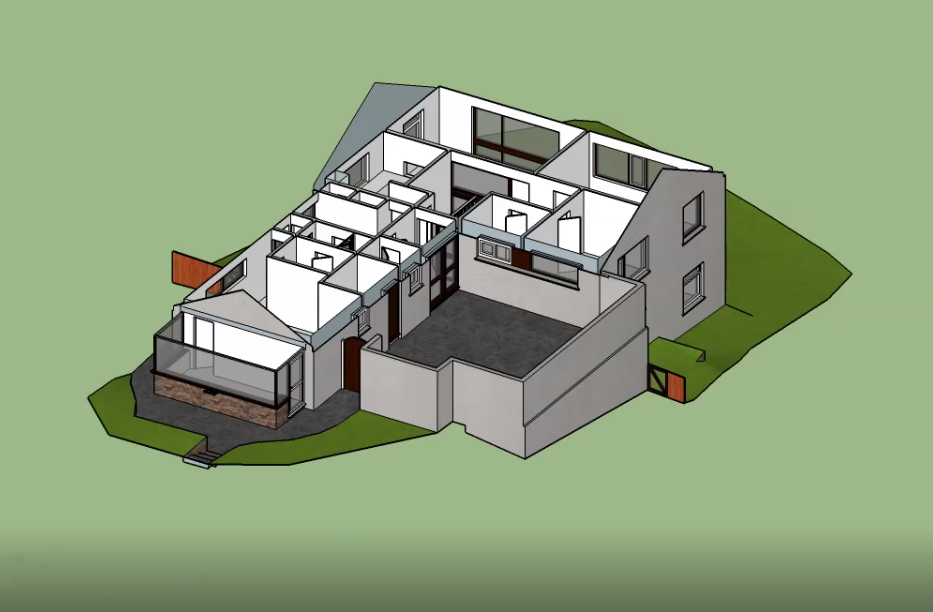
It used to be that registering pointcloud data from a 3D laser scan was a major part of the job and required significant time and effort back in the office. Fortunately, it’s a far simpler process these days, especially with the implementation of software advancements such as Trimble RealWorks which provides cloud to cloud registration, and options for target based registration as well as plane based registration. The advantage of this further automated process is that it provides us with additional time to consider what we do with our 3D scan data rather than how we register it.
One person who has been doing exactly that is Steve Dash, Senior Measured Building Surveyor at SUMO. Having been equipped with, Trimble RealWorks, Trimble SketchUp Pro and Trimble’s Scan Explorer Extension plug-in for some time, Steve has been converting SUMO captured pointcloud data into impressive 3D models, which have provided SUMO’s clients with even better visualisation of their survey data.
“It all started when we were asked by one of our clients to produce a 3D SketchUp model as the final deliverable. Our client was delighted with the result which met their exact requirements. This first project was back in early 2016 and since then we’ve been offering a 3D SketchUp model service as an addition on many of our projects. On completion of the models, we provide the client with a download-link for a SketchUp viewer where they can easily view and share their 3D model”
“We’ve been running this service for some time now and we are still making exciting developments in this area. The great benefits of these SketchUp models are that we also have the floorplan, elevations and can provide as many sections as required. Furthermore, as we continue to provide this quality service, we are aiming to produce a 3D model with all of our 2D drawings as a standard. Our clients have been delighted with the results and we’ve been really impressed with the software’s ease of use. SketchUp Pro is a friendly and forgiving 3D modelling software and whilst it doesn’t provide the same high-level of functionality as some other more expensive modelling packages, it remains a highly operational and cost-effective entry level option for many of our clients which SUMO are happy to provide.
View the videos created by Steve here, here and here
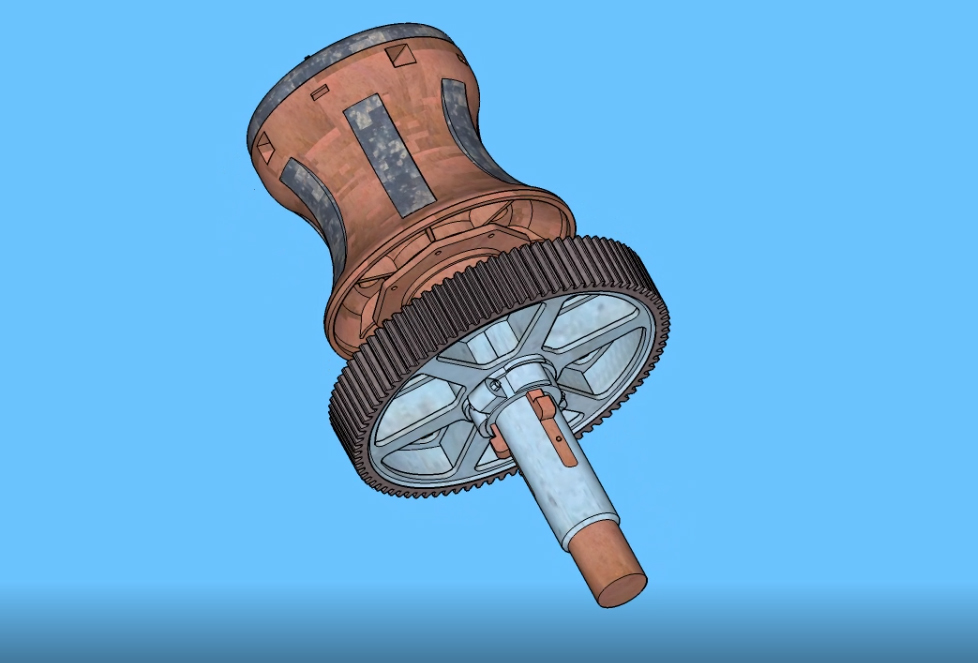
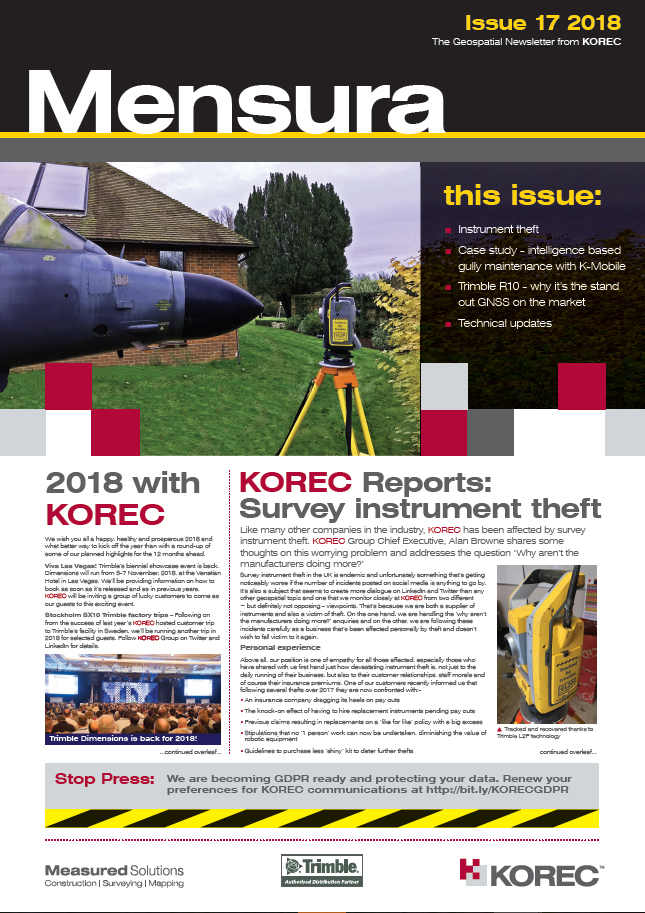
Welcome to the first issue in 2018 of our geospatial newsletter, Mensura. Our front page story features an open letter from KOREC Group CEO, Alan Browne, on the worrying problem of instrument theft. This is a topic that we will be revisiting throughout the year so please do keep us updated on any thoughts you have on the subject.
This issue also takes a look at some of the ‘value added’ benefits of being a KOREC customer. Look out for details on Trimble Dimensions and trips to Trimble’s SX10 factory in Stockholm. We’ll be inviting lucky customers as KOREC guests to both events.
Finally, our case study focuses on Enviroflow Management’s digital capture of gully data on behalf of its client, Calderdale Council using KOREC’s K-Mobile data capture and handling software
KOREC Regional Business Director has kicked-off the new year with some thoughts on 2018 and the survey industry. In his new look GeoConnexion column Chris looks ahead and sees the democratisation of data as something that’s within our grasp.
Read the piece here
or Download the PDF here

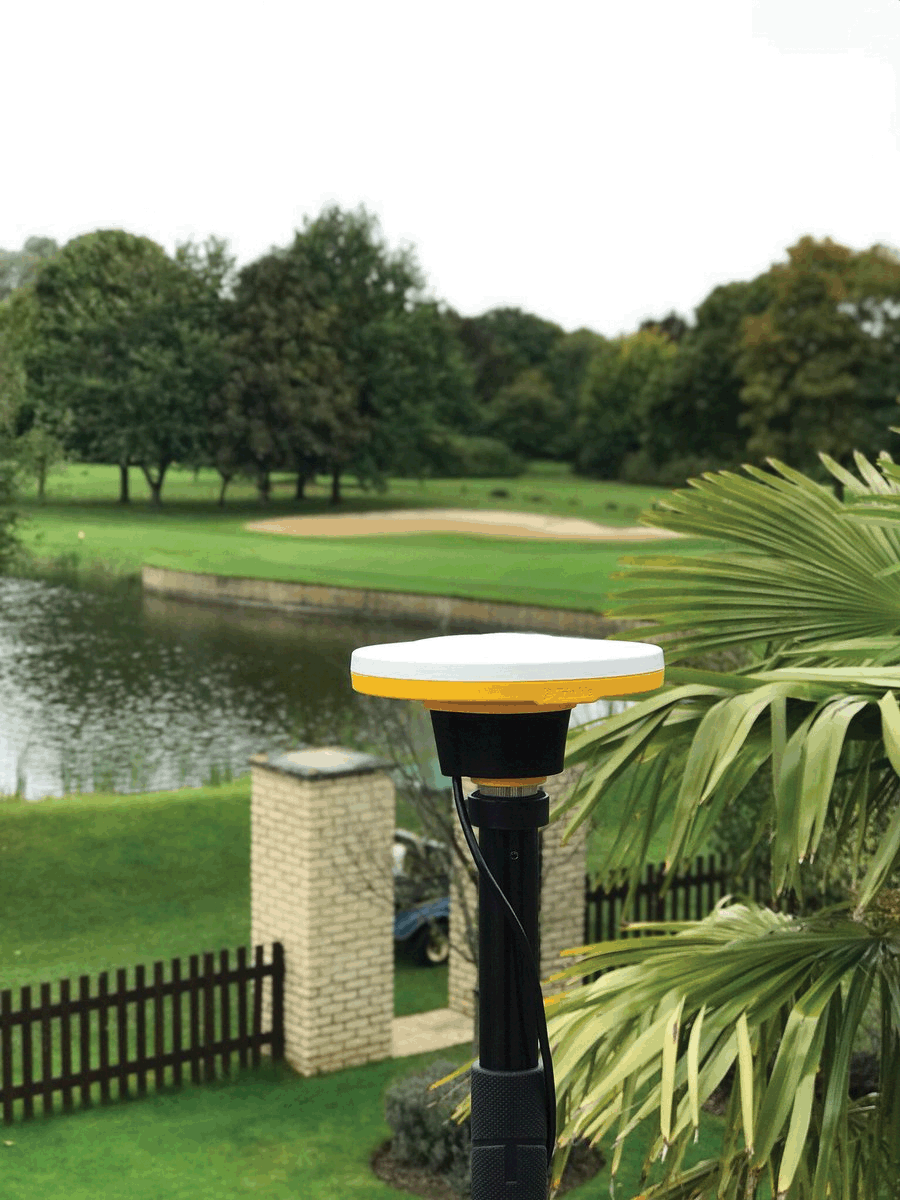
Who would use centimetre accuracy on a smartphone and what would this innovation mean for the geospatial industry?
At the end of 2016 we found ourselves asking these questions following the announcement of the world’s first software GNSS receiver, Trimble Catalyst. These are also the questions that KOREC’s Business Area Manager for Mapping & GIS, Richard Gauchwin, sought to answer in his article in the January issue of CES. In this piece Richard identifies the five key user groups that we have seen emerge since the launch of Catalyst:-
Who will use cm accuracy on a smartphone and what does this innovation mean for the geospatial industry? At the end of 2016, we found ourselves asking these questions following the announcement of Trimble Catalyst, the world’s first software GNSS receiver. Catalyst has been designed to run on Android phones and tablets and when used in conjunction with a small ‘plug and play’ low cost digital antenna, it turns these devices into cm accurate data collection tools.
Trimble Catalyst represents a new era of GNSS technology and a new business model – software as a service (SaaS). It’s available as an on-demand subscription service and offers a range of accuracies from 1m to centimetre level, priced accordingly. In short, it puts affordable, cm accuracy into the hands of any industry in the world that uses smart phones which I believe is pretty well all of them!
The ethos behind Catalyst is threefold; to make GNSS more accessible by adding a whole new level of functionality to a tool almost all of us have in our pocket, the smartphone; to make GNSS more accessible by removing complicated set ups involving base stations; to make GNSS more accessible by simplifying the delivery of the service.
Of course, the ubiquity of the smartphone and its enhanced processing power has been key to the timing of Catalyst as has the on-demand economy that continues to shape customers’ expectations in many business areas including the geospatial industry.
In terms of development, key requirements for any technology aimed at a broad user group are likely to include ‘small’, ‘light’, ‘user-friendly’, ‘accessible’ and ‘affordable’. Combine these elements and we have a list of the drivers behind Trimble Catalyst.
The Catalyst business model
It’s important to understand that the Catalyst business model is not the solution for every application that requires cm accuracy. My advice would always be to start with the workflow. For example, if the requirement is for accurate positioning on a project basis, then Catalyst would be a good option for short term use as an operating expense. It’s also ideal for a larger and broader user base where workflows could benefit from high-accuracy positions but the data collection is not the primary function of the workforce.
For large roll outs on contracts, the advantages of a software GNSS receiver can be immediate. Most people already have an android smartphone so the only required accessory is the lightweight, low priced digital antenna. No GNSS hardware is required because Catalyst is a software-defined GNSS receiver and users subscribe to the level of accuracy needed, centimetre, decimetre, sub-metre or metre, from a range of options priced from £35 per month.
As I mentioned earlier, simplicity was one of the driving factors in the development of Catalyst. On startup you just plug in the Catalyst antenna, select the best available correction service based on location and subscription level and off you go. But ease of use will also depend upon the choice of data capture software. We predict that the developers of this type of software will continue to work on making their solutions even more intuitive to the non-expert, to the extent where training can be cut to just an initial short phone call, again reducing project costs.
The expectation is that this type of technology and business model will extend the accessibility of high accuracy positioning way beyond the ‘core’ of geospatial users already familiar with it and into the hands of anyone who wants to collect accurate special intelligence. However, Trimble Catalyst has only been available in the UK since July 2017 and as yet, the data collection apps it is compatible with are recognisable names from the industry, Trimble’s Terraflex, KOREC’s K-Mobile and Esri’s Collector App, all developed for general field data collection. However, Trimble’s downloadable software development kit (SDK), means that we are already starting to see companies with existing apps looking to integrate them with Catalyst. This will provide an interesting indicator as to who is really making this technology work for them. Early developers include a company specialising in the precise positioning of trip hazards on pavements and a construction company with an augmented reality solution that places digital objects into the view of the physical world.
Early adoption and the emergence of key users
Based on the last 5 months we are seeing clear indicators as to where the interest in this type of SaaS lies. Although it’s early days, we can broadly group those taking up the technology into five different types of user.
Users for whom affordable cm accuracy can greatly enhance their day to day business but cannot justify the expense of a dedicated high accuracy GNSS receiver or the cost of sporadically having a surveyor or second team on site. Top of this list has to be the drone operators we work with who wish to establish ground control for their aerial mapping projects. Ground control increases x,y,z accuracy which enables a project to be scaled in all three axes and allows users to add value to their offering through accurate 3D measurements. Ground control also ensures correct geo location of the surveyed site by tying into the OS Grid. Previously the expense of buying a GNSS to deliver the cm accuracy required for establishing ground control would have cost more than the drone itself. This simply would not be viable for a ‘value add’ to an existing service.

Using Trimble Catalyst for UAV ground control points at a UK quarry site
Also falling into this group is a customer that specialises in pipelines and wished to close the gap between expected compliance and what really happens on site. Previously this customer was taking georeferenced photos and recording relevant positions, such as pipe valves, for QA purposes just using a standard mobile phone. However, the lack of accuracy with this system meant that pipes could be located on the wrong side of the road or even in people’s gardens. Catalyst has provided a low-cost solution that has elevated their QA reporting to a new level allowing them to provide accurate digital plans of their work.
Users who already understand and use high accuracy GNSS but require additional systems for carrying out ‘irregular’ surveys. Typically, any large civil engineering project in the UK, whether it be roads, rail or building construction will see an onsite team of busy survey professionals undertaking a range of surveying tasks from setting out to as-builts, all on a daily basis. Supporting the main task will be other smaller teams, vital to the smooth running of the project, but with little or no survey experience, for example, those carrying out soil analysis or borehole sampling. Whilst it’s vital to have an accurate location for a test area or borehole if you are to navigate back to them, especially in overgrown areas, it’s not something that a major contractor would want to commit survey resources to.
Additionally, much of our new SaaS business is with utility companies including one responsible for creating manhole cards. This company’s field workers are recording lots of attribute information including manhole location, cover shape, chamber size, ladder position and pipe direction and diameters all backed up by photographic evidence. However, all this attribute information needs to be attached to an accurate position for the presentation of a complete condition report.
Users who have never used cm accuracy before and have no survey experience. A great example in this area is a company we’ve been working with that specialises in designing and installing agricultural irrigation systems. Previously, they would install a system and simply record all the information relevant to the installation using pen and paper. Now, for the first time, they can access cm accuracy on their mobiles and position all the information they need to create an accurate plan of what’s been installed, the pipe levels, direction of flow etc – vital information for the maintenance and development of each customer’s system whilst adding value to their own proposition.
Users who require on-demand cm accuracy as part of a fully customised solution where position is just one piece of the puzzle. Our KOREC software development team works in partnership with many companies advancing and tweaking their data capture systems to fit a specific workflow. Already we have customers coming to us for whom Catalyst is the starting point for a fully customised system. A useful example here is the testing companies that we’ve been dealing with. Responsible for testing things such as lighting columns, masts or signalling equipment, it’s their job to ensure a column’s safety and to establish when it may need replacing. Previously the test results, documentation and evaluation for this process were all recorded on paper. Testing companies have come to us with a view to digitising the process and are now using Catalyst to provide the cm accuracy of the column positions in conjunction with customised KOREC K-Mobile software for the collection of the required attribute information. The KOREC system also automatically bundles this information into a pdf report for immediate transfer to the office. This means that those responsible for the safety of the assessed columns can react to failed tests immediately and located the correct column without delay.
Users we could never have predicted! I mentioned at the beginning of this piece that the Trimble Catalyst business model puts affordable cm accuracy into the hands of any industry in the world that uses smart phones and believe me, that really could mean any industry at all! We can’t wait to see how people take up this technology and we are already receiving some interesting feedback courtesy of the Ordnance Survey’s GeoVation Hub which was the recipient of a Trimble gift of Catalyst licenses. The Hub is home to a group of innovators ranging from Big Data users providing insurance risk analysis for drone flights to the makers of collaborative real-time infrastructure planning tools. We’re already hearing reports of Catalyst being used with ground based drones. Watch this space!

Kerb line surveyed to 1cm accuracy using Trimble Catalyst shown on Ordnance Survey Mastermap
An evolving technology
Catalyst will continue to develop and this evolution will be led by customer demand. Indeed, we are already seeing this with the arrival of GLONASS signals for even better coverage in challenging areas such as city centres.
Trimble is aware that services such as ‘pay per view’ shape customers’ expectations in our markets which may make other subscription options a possibility. Catalyst for iOS is another development which would fit into the Trimble customer business process. Finally, Trimble is also actively seeking third party developers wishing to integrate their applications with Catalyst, something underlined by its gift of licenses to the Ordnance Survey’s Geovation Hub. This new generation of users is also likely to shape the future of Catalyst.
In conclusion, by putting cm accuracy into the hands of those outside traditional geospatial business areas we can expect further progress in the democratisation of data as it becomes more usable and more understandable by more people. This will allow many businesses to expand away from being just data providers to service providers adding a whole new level of value to what they do and what we as an industry can offer. Who knows where the combination of low cost cm accuracy and open access will lead us and I for one can’t wait to find out!
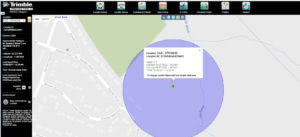
It’s always good to hear about technology that works exactly as intended which is why we are delighted to report that Trimble’s L2P (Locate2Protect) real-time equipment monitoring has saved KOREC customer Central Alliance from the inconvenience and expense that follows the theft of an instrument.
All new Trimble S-Series Total Stations come with L2P built-in so when an opportunistic theft by moped resulted in Central Alliance losing a Trimble S9, Principal Land Surveyor Milen Charov immediately informed the police and called KOREC. Via the L2P portal, KOREC’s Technical Support was able to locate the instrument and track it live as it moved away from the site. When the instrument position remained static, KOREC sent Milen the latitude and longitude of the missing instrument and he was able to retrieve it from the bush where it had been discarded, unharmed and needing nothing more than a check.
Milen told us, “KOREC’s response couldn’t have been faster. The down-time caused by the loss of an instrument along with the hassle of dealing with insurance claims is extremely inconvenient. L2P is a great service and it’s saved us trouble, time and money. After an incident like this we have realised how important the locator functionality is. It’s absolutely worth it and I strongly recommend it.”
What can the industry do to help combat industry theft? Read our TSA report here.

